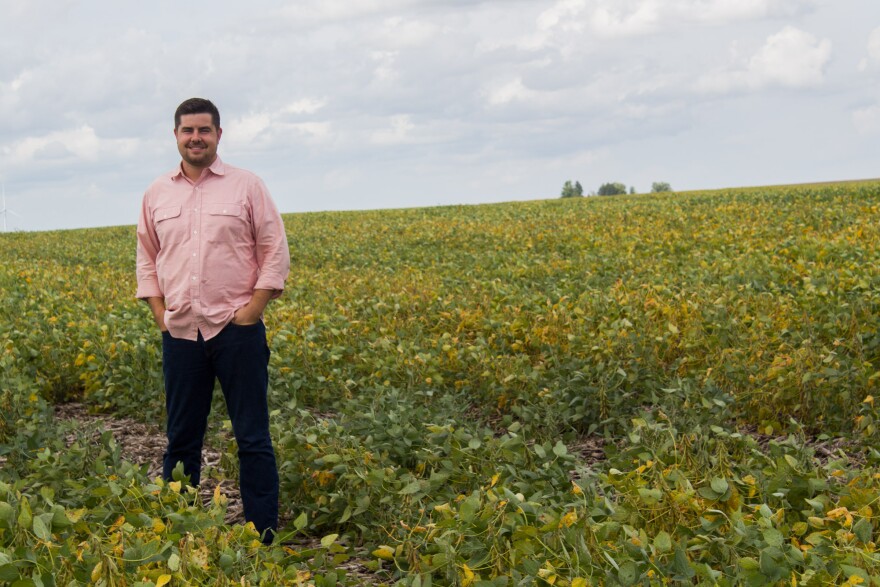An increasing number of farmers is using cover crops to keep water, soil and nutrients from running off fields. But while many studies have shown the agronomic and environmental benefits of the plants that come up after cash crops such as corn or soybeans get harvested, it’s been harder to determine whether a farm business will recover the initial planting cost.
A new report says there’s evidence the conservation strategy brings economic benefits, too.
Several farmers and an agricultural accounting firm, K-Coe Isom, collaborated with the Environmental Defense Fund to calculate the impact of cover crops, taking into consideration savings on herbicides and fertilizer, as well as increased yields that result after years of planting things like rye, clover and radishes in the off-season.
“We are seeing organic matter levels improve in soils, we’re seeing not just production, or yield-enhancing activities, but also other benefits to the cover crop system, especially with weed control,” central Iowa farmer Scott Henry said. He opened his books and his farming practices to scrutiny for the report. “Over time, those benefits can snowball.”
Henry said initially his family planted cover crops because they believed the environmental benefits made them “the right thing to do,” but now, he said, the economic returns are clear.
The report, “Farm finance and conservation: how stewardship generates value for farmers, lenders, insurers and landowners,” which was released Thursday, also looked at underlying obstacles for adopting cover crops. Those might be tensions between landowners and tenants, concerns about short-term costs or questions about long-term benefits, according to the EDF’s Maggie Monast, one of the authors.
“Instead of just throwing money at the problems, we want to be able to figure out how to work with farmers to address the actual obstacles to adopting these practices,” Monast said. And then the EDF can look at ways to get support from the private sector, such as companies paying a premium for grain grown on fields that use cover crops or crop insurance companies recognizing their contribution, for example, to a farm’s resilience to drought. And, she said, they can support the spending of public money specifically to meet certain concerns. For example, many states, including Iowa, Indiana and Illinois, offer a cost-share program to encourage farmers to try cover crops.
Mark Peterson, who was not involved with the study, said it’s taken a half-dozen years to see a concrete financial benefit from cover crops on his southwest Iowa farm. But next season, he’ll reduce the amount he spends on chemicals like herbicides and fertilizers in half on his soybean fields.
“We intend to cut from two passes down to one,” Peterson said, “and that will cover the basic cost of the cover crops.”
Peterson added that while some of his neighbors have seen his fields and decided to give cover crops a shot, he cautions them to be patient.
“You don’t put them up expecting them to pay for themselves in one year,” he said.
The EDF report demonstrates that cover crop expenses are balanced by savings not only on herbicides and fertilizer but also labor, fuel and equipment costs. Plus, they boost profit through by bumping up yield.
“Trying to find something that helps alleviate our weed pressure, helps alleviate soil compaction and nutrient cycling… there’s not a lot of alternatives to cover crops that can do as much in terms of bang for your buck,” said Ohio farmer Josh Yoder, who also opened his field and accounts to the report. “The tighter margins get for us, the more deeply we have to think about how we continue to utilize and maybe better utilize them.”
Follow Amy on Twitter:@AgAmyinAmes




